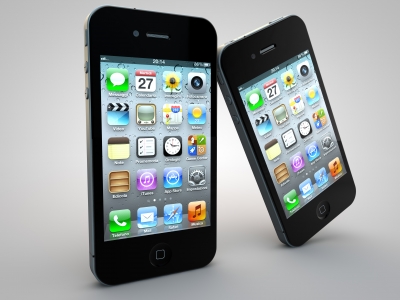

There’s an app for that. What does mobile mean to you? (Image credit: IdeaGo via freedigitalphotos.net)
What’s the best reason for marketing on a mobile device? You might answer, “It’s mobile, small, or convenient.” Wrong! It’s not about the phone at all, it’s about the person attached to the phone.
Today I had the opportunity to sit in on an Ad Club Denver luncheon, and it brought some fresh perspective to the evolving world of marketing and technology. Ben Kennedy of Integer Group and Jane McPherson from SpyderLynk ran the Mobile Marketing discussion.
Both speakers had a different view of what it meant to be mobile and the strategies used to reach the targeted market, but they agreed on the goals of being mobile.
Jane’s perspective on what mobile mean is strictly in regards to cell phones. She said that 90% of those between the ages of 20-30 own a cell phone or smartphone. (Which, in my head I could have guessed due to phone books getting smaller each year, but from a marketing standpoint that blew my mind!)
Jane’s strategy of reaching the target market included 3 “A” steps: Advertise, create an Application (App), and Activation.
Ben’s perspective on being mobile means accessing information via cell phone, tablet, etc. Sending the right message at the right time and place is what is focused on when reaching the target market, and research has a lot to do with this process. His strategy includes five points: strategy, creative (hook the consumer), development (what to build), activation (bring it to life), and analytics (data collection).
Ben spoke about how people’s mobile devices are very personal. So, in order to market to the target audience, we must first understand the consumer so that we may be invited into their “private space.” He compared the relationship to dating …
“Let’s say you go on a date with someone and you have a great time. Well you decide not to call the person back for a week or two. In the meantime, you see your friends and people around you getting into relationships and you decide that you want to finally call that person back. Well, that person has forgotten you, because there was no interaction. On the other hand, let’s say after the date you call the person every 30 minutes or each day for a week. That person is going to get sick of you, and only stand the forceful interaction for so long.”
In other words, it’s about balance. It makes perfect sense to get to know your consumer / target market in order to personalize the mobile interaction for them. Timing is also very important. You don’t want the consumer to forget you, but you also don’t want to hassle them.
A point of value was brought up. The ways people use their mobile devices are primarily in two spectrums: 1) to compress time and 2) expand time.
An example of each:
1) You’re in a hurry, but you want your Starbucks coffee. Starbucks creates a mobile app to place your order ahead of time, so you can just pick it up and leave when you get there.
2) Let’s say you’re waiting to meet someone, but they’re running a 15 minutes behind, so you take out your smart phone and check out the news or play that super-awesome game.
Understanding the value of each of these usage areas is important for marketers.
Ben and Jane both agree that the value and personalization the consumer gets from mobile marketing are the most important factors in achieving attentiveness and interaction. In other words, it’s about you – the person on the other end of the communication. Understanding that is crucial to mobile marketing success.
Mobile marketing is something we explore here daily at AOR in order to optimize communications for our clients. So, how do YOU use it?
Leah Burk is an Account Intern at AOR, Inc.
See our recent work here. And don’t hesitate to reach out.